Children and pets isn’t just a heartwarming image—it’s a partnership backed by science.
Did you know that kids with pets often show improved empathy and social skills? Dive into this article to uncover the fascinating reasons behind this bond, and discover why a child’s giggle and a tail wag might just be the perfect formula for growth and happiness.
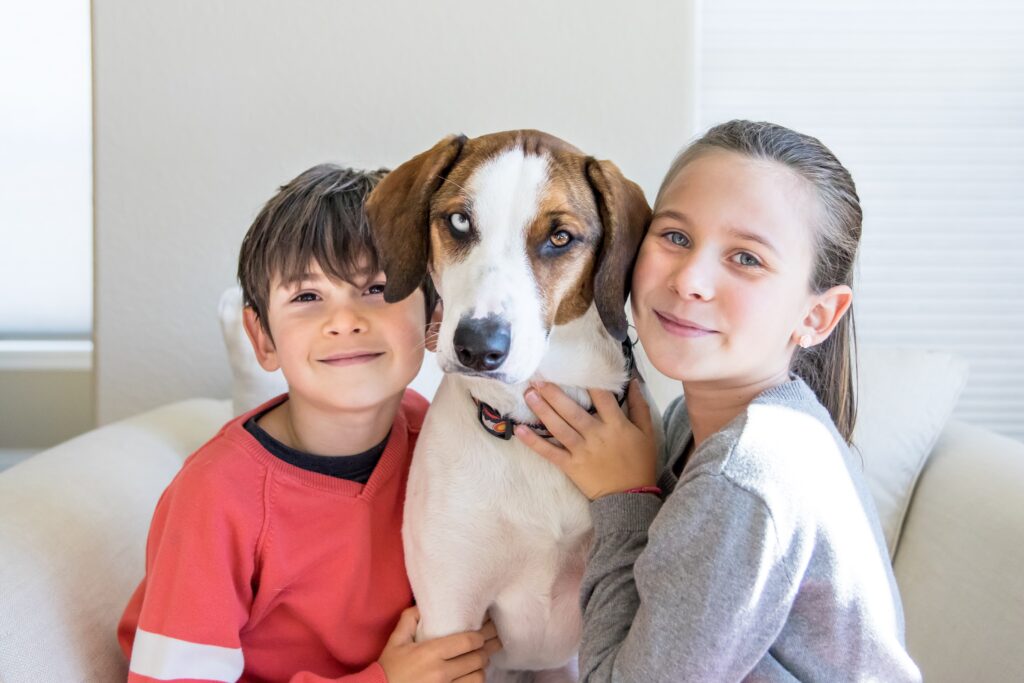
Some of the links in this post are affiliate links. This means if you click on the link and purchase the item, I will receive an affiliate commision at no extra cost to you. All opinions remain my own. Read more on our Privacy Policy Page
WHAT AGE SHOULD A CHILD GET A PET?
Deciding on the right age for a child to get a pet is a journey unique to every family. Often, parents ponder this question, hoping to find a magical number. While there isn’t a one-size-fits-all answer, many experts suggest that the age range of 7 to 9 is a good starting point. Around this time, children typically start to showcase a heightened sense of responsibility and understanding, making them more reliable caregivers.
That being said, every child’s development is distinct. Some kids might be ready for a pet at a younger age, while others might need a bit more time. It’s crucial to evaluate not just age, but also your child’s maturity, interest, and the support system at home.
Cavie Guinea Pig Cage & Rabbit Cage – on amazon

WHAT KIDS OF PET IS BEST FOR YOUR CHILD?
Choosing the right pet for kids depends on the family’s living situation, the child’s age, and the type of interaction you hope your child will have with the pet. Here’s a list of pets that are often considered great for kids, along with some of their benefits:
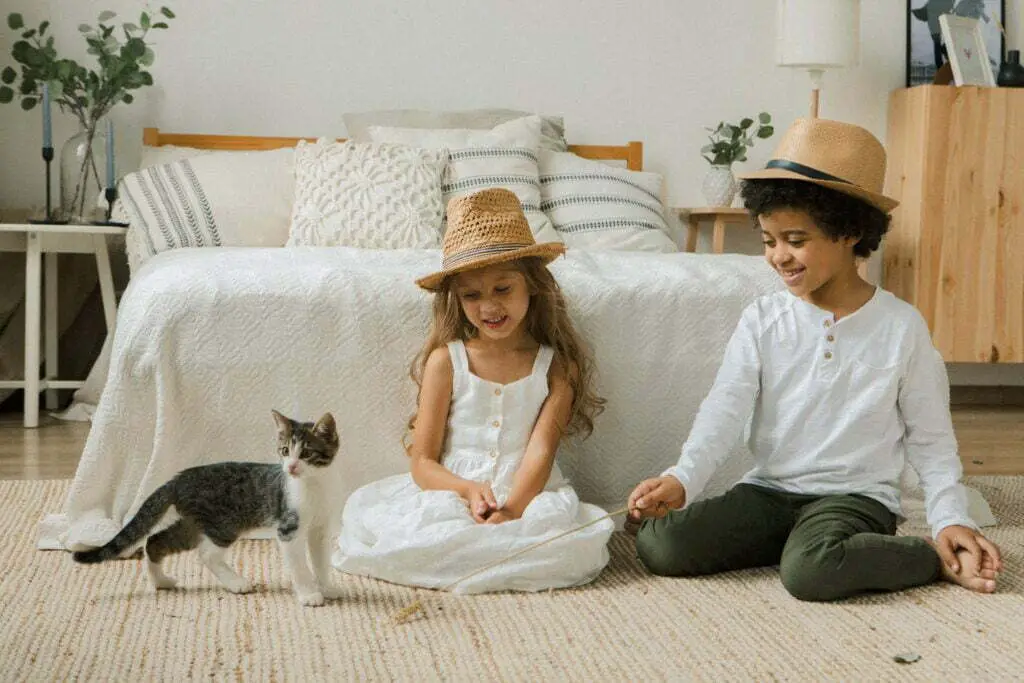
1. Dogs
- Benefits: Dogs are loyal and can be great companions. They often bond deeply with family members and can teach kids about responsibility, empathy, and the joys of active play.
- Best for: Active families, children who want a playful companion.
Puppy Essential Starter Kit – on amazon
2. Cats
- Benefits: Cats are usually low-maintenance compared to dogs. They can offer companionship and warmth without the need for constant attention.
- Best for: Families in apartments or smaller living spaces, children who want a more independent yet affectionate pet.
>>> Kitten Supplies Starter Kit – on amazon
3. Fish
- Benefits: Fish tanks can be soothing and provide a sense of peace. They teach kids basic pet care responsibilities without much hands-on time.
- Best for: Younger children, families who want a low-commitment pet.

gold fish starter kit
4. Hamsters, Gerbils, and Mice
- Benefits: Small rodents are often a child’s first pet. They teach kids about primary caregiving tasks and are relatively low-maintenance.
- Best for: Children who want a small, contained pet to observe and occasionally handle.
5. Guinea Pigs
- Benefits: Guinea pigs are gentle and often enjoy being handled, making them good for cuddles and interaction.
- Best for: Kids who want a pet to touch and play with but aren’t ready for the responsibilities of larger animals.
6. Rabbits
- Benefits: Rabbits are social and can bond with their owners. They require regular care but can teach kids about grooming and feeding responsibilities.
- Best for: Families with a bit more space, children who want a mix of interaction and observation.
7. Birds (like Budgies and Canaries)
- Benefits: Birds can be entertaining to watch and listen to. Some birds can mimic sounds or even be taught tricks.
- Best for: Families who want an interactive pet without the demands of mammalian pets.

8. Reptiles (like Turtles and Geckos)
- Benefits: Reptiles can be fascinating for kids interested in unique pets. They often have specific care requirements, teaching kids about diverse forms of life.
- Best for: Older kids who are keen on learning about different species and can manage specialized care.
9. Hermit Crabs
- Benefits: They are low-maintenance and can be fun for kids to observe as they grow and change shells.
- Best for: Young kids who are just starting to learn about pet responsibilities.
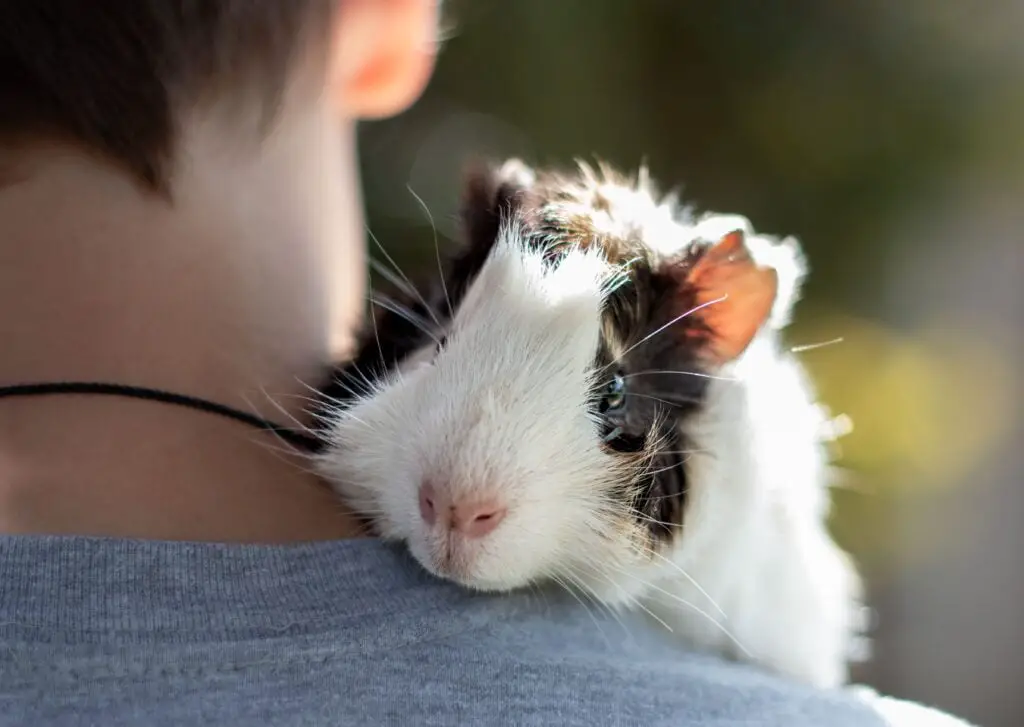
When choosing a pet for kids, it’s crucial to consider the lifespan, care requirements, and potential health issues of the animal. It’s also essential to understand that while pets teach kids responsibility, adult supervision and involvement are often necessary to ensure the well-being of both the pet and the child.
6 BENEFITS OF HAVING A PET FOR CHILDREN
- Mood Magic: Feeling down? Pets have this knack for bringing sunshine on a cloudy day, ensuring smiles and laughter.
- Active Adventures: Those walks and playtimes? They’re not just entertaining; they’re a workout, keeping both you and your pet in shape.
- Conversation Kickstarters: With a pet by your side, you’ve got an instant icebreaker. Meeting neighbors or making friends at the park just got easier!
- Wisdom on Paws: Through feeding times and cleaning up, pets silently teach us valuable lessons about care, consistency, and love.
- Watchful Buddies: Some pets, especially dogs, have a keen sense of their surroundings, acting as mini-security guards with their alertness.
- Ever-present Pals: With a pet, solitude is rare. They’re there for lazy afternoons, movie nights, and everything in between, ensuring company and comfort.
In a nutshell, pets infuse our lives with love, laughter, and invaluable life lessons. If you’re on the fence about getting one, remember: it’s not just about adding a pet; it’s about enhancing life quality.
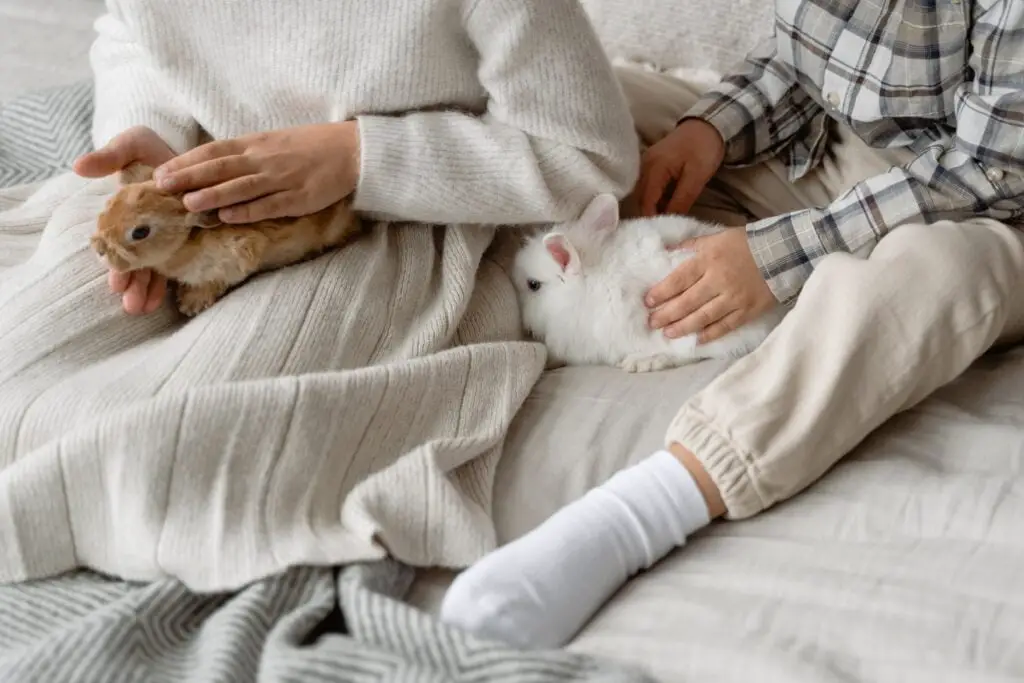
WHAT ARE PROS AND CONS GETTING A PET FOR CHILDREN
Pros of Getting a Pet:
- Companionship: Pets offer unconditional love and can alleviate feelings of loneliness.
- Physical Activity: Especially with dogs, pets encourage regular exercise through walks and play.
- Mental Well-being: Interacting with pets can reduce stress, anxiety, and depression.
- Teaches Responsibility: Caring for a pet can instill a sense of responsibility, especially in children.
- Security: Dogs, in particular, can provide a sense of security in homes due to their protective instincts.
- Social Interaction: Pets can be great conversation starters, helping improve social interactions and bonds with others.
- Life Lessons: Owning a pet provides lessons in empathy, compassion, and the cycle of life.
Cons of Getting a Pet:
- Time Commitment: Pets require daily care, including feeding, grooming, and, in the case of dogs, walking.
- Financial Costs: There are costs for food, vet visits, grooming, training, and pet insurance.
- Travel Limitations: It can be challenging to find pet-friendly accommodations or require arrangements for pet care during vacations.
- Potential Allergies: Some individuals may be allergic to pet dander, leading to discomfort or health issues.
- Damage and Mess: Pets, especially young ones, can cause damage to furniture or have accidents inside the home.
- Emotional Challenges: Pets have shorter lifespans than humans, so owners may face the grief of losing them.
- Limited Housing Options: Some rentals or housing communities have restrictions on pet ownership.
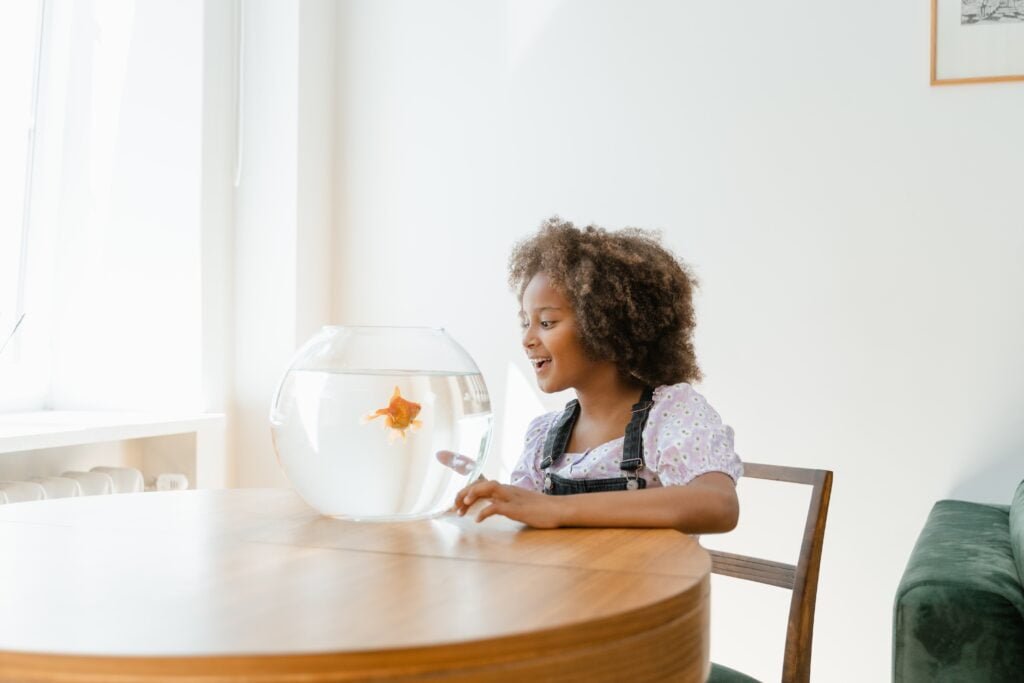
While pets bring joy and companionship, it’s essential to weigh these pros and cons to make an informed decision that fits your lifestyle and readiness for commitment.
HOW A PET AFFECTS CHILDREN?
Pets have a profound impact on children, influencing their development, well-being, and everyday experiences in various ways. Here’s a breakdown of how pets affect children:
1. Emotional Development:
- Companionship: Pets provide unconditional love and comfort, reducing feelings of loneliness.
- Empathy: Caring for an animal teaches children to recognize and respond to the needs and feelings of others.
- Coping: Pets can offer solace during tough times, and the eventual loss of a pet, though difficult, can teach children about grief and coping with sadness.
2. Physical Health:
- Active Lifestyle: Children with pets, especially dogs, tend to be more active through playing and walking.
- Reduced Allergies: Some studies suggest that children exposed to pets at a young age might have a lower risk of developing allergies and asthma.
3. Social Skills:
- Interaction: Pets can act as bridges in social situations, making it easier for children to interact and bond with peers.
- Responsibility: Taking care of a pet’s basic needs instills a sense of duty and commitment in children.
4. Cognitive Development:
- Education: Kids often become curious about their pets’ behaviors, diets, and habitats, leading to educational exploration.
- Routine: The regular schedule required for pet care can help children understand the importance of routine and time management.
5. Psychological Benefits:
- Boosted Self-Esteem: Successfully caring for a pet can give children a sense of accomplishment and improve their confidence.
- Security: The consistent presence of a pet can provide a sense of security and reduce anxiety in children.
- Therapeutic Impact: For children with emotional or behavioral challenges, pets can act as a form of therapy, offering a non-judgmental companion to connect with.
6. Life Skills:
- Understanding Life Cycles: Pets provide firsthand experiences about life, reproduction, aging, illness, and death, teaching children about the natural course of life.
- Problem-Solving: Unexpected situations, like a pet fish jumping out of its bowl or a cat getting stuck up a tree, can teach children to think quickly and solve problems.
However, while the positive impacts are numerous, it’s also essential to ensure children are guided correctly in treating pets with respect and kindness. It’s beneficial for parents or guardians to oversee their interactions, especially with younger children, to ensure both the child’s and pet’s safety and well-being.
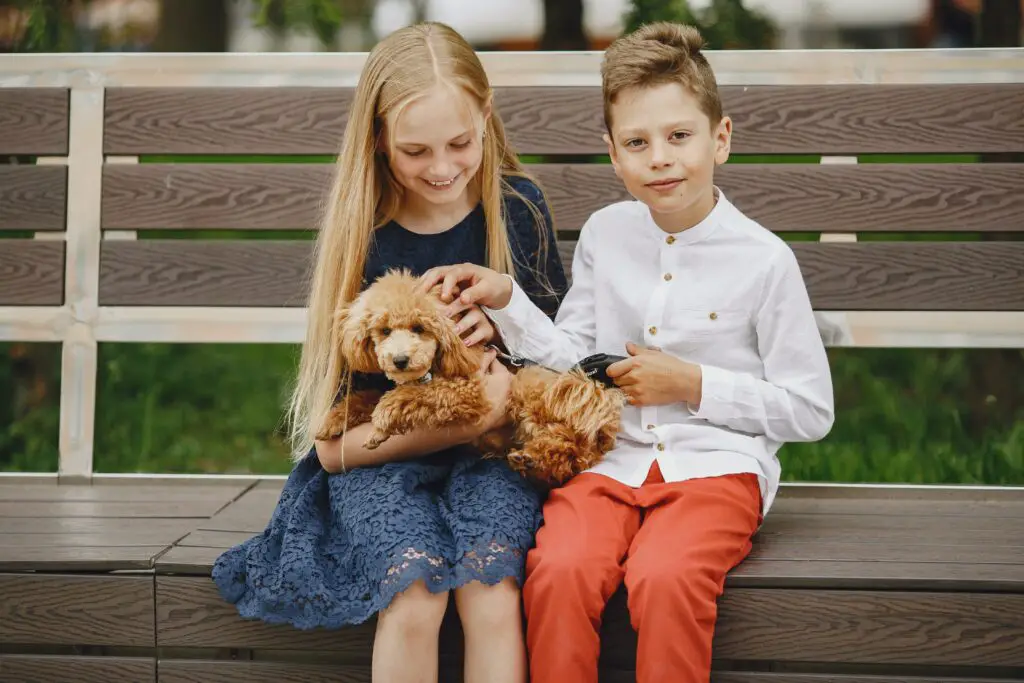
INTERESTING FACTS ABOUT CHILDREN THAT HAVE A PET
Early Immune Boosters
Research has shown that children who grow up in homes with pets often have stronger immune systems and are less likely to develop common allergies. A study found that babies who live with cats or dogs during their first year of life get fewer colds and ear infections than their pet-free counterparts.
Furry Therapists
Animals, especially dogs, are increasingly being used in therapeutic settings for children. Their presence has been shown to help children with autism and other developmental disorders improve their social skills and communication. Additionally, children often confide in pets, helping them process emotions and challenges they might not yet be able to articulate to adults.
Literacy Boost
Reading aloud is a crucial aspect of literacy development. Some schools and libraries have introduced “Read to a Dog” programs, where children read out loud to trained therapy dogs. These programs have found that children often feel more relaxed and less judged when reading to a dog, improving their confidence and reading skills over time.
CONCLUSION – PET AND CHILDREN
Pets and kids make the best of friends! Through playtimes, shared secrets, and everyday adventures, they create a special bond that’s hard to beat.
This bond isn’t just about fun; it helps kids grow in many beautiful ways. So, whether it’s a child reading to their cat, playing fetch with their dog, or just watching fish swim, the connection between pets and children is truly magical.
It’s a friendship full of love, laughter, and unforgettable moments.
Enhance Sibling Bonding with Our Recommended Products!
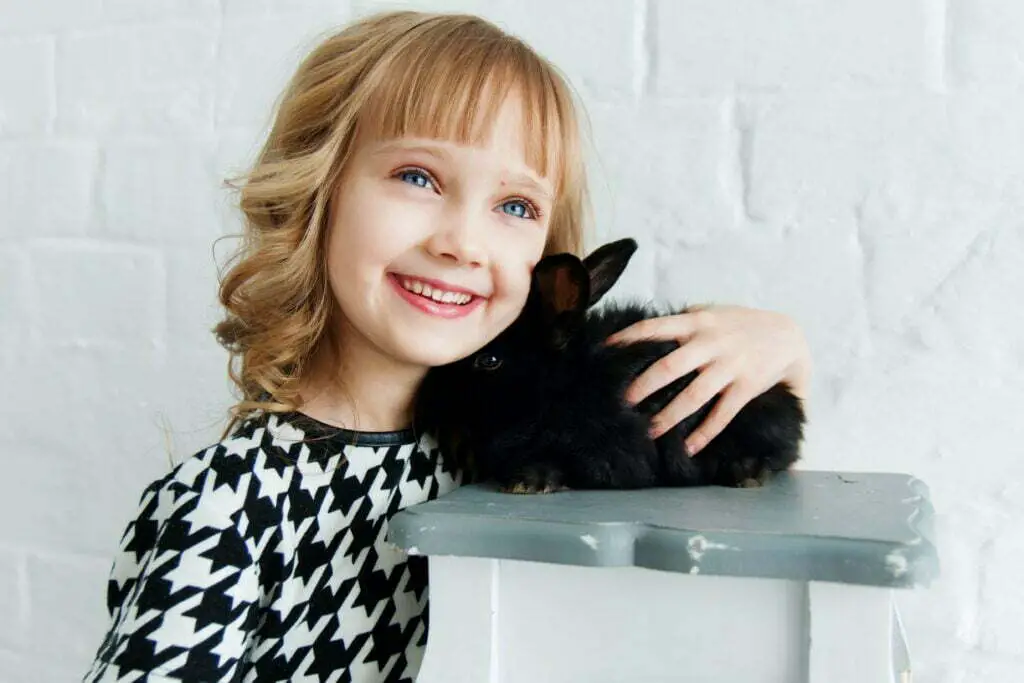
references: (https://www.parents.com/parenting/pets/kids/the-benefits-of-pets/),
How Your Child Can Benefit From Having a Pet ( https://pathways.org/benefits-of-pets/)






